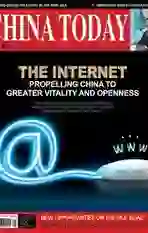Economy
2014-09-27
Chinas Printing Output Becomes Worlds Second Largest
The 2013 output of Chinas printing industry reached nearly RMB 1.04 trillion, for the first time exceeding RMB 1 trillion. This makes China the worlds second biggest producer of printed materials, with 105,000 printing enterprises employing more than 3.4 million workers.
According to Wang Yanbin, head of the Printing and Distribution Department of the State Administration of Press Publication, Radio, Film and Television, Chinese printing firms are becoming more competitive globally. Wang says that the industry has witnessed stable growth in international processing despite the overall slowdown of foreign trade. In 2013, the Chinese printing trade had a combined value of RMB 83.75 billion, up 8.5 percent over 2012. In the 2014 World Cup, authorized printed materials were manufactured by a Chinese company.
Chinese Banks Contribute One Third of Top Banks Profit
According to a survey by The Banker on June 30, last year saw the gross profits of the world top 1,000 banks set a new record with US $920 billion, far above the US $786 billion in 2007 before the financial crisis. Chinas major banks took up roughly one third of the sum, signaling the rise of Chinese banks overall strength after the financial crisis.
The survey also indicates that the banking industrys gross profits increased by 23 percent between 2012 and 2013. In terms of the size of tier one capital, Industrial and Commercial Bank of China(ICBC) tops the list, followed by China Construction Bank(CCB), J.P. Morgan Chase& Co., Bank of America and HSBC. The survey concludes that ICBCs huge capital reserve reflects the banks strong ability to withstand market concussions or even turmoil, as well as its capacity for issuing largescale loans. CCB rose from the fifth place to the second.
China Relaxes Entry Requirements for Foreign Firms
Chinas Ministry of Commerce removed the lowest registered capital requirement for most foreign-invested firms, excluding specific industries where laws and administrative regulations impose special requirements on minimum capital amount. The move is an extension of earlier reform measures to eliminate registered capital limits for domestic companies. Both aim to spark market vitality through lowering market entry thresholds. Under the new policy China abolishes its restriction on the ratios of first contribution and capital contribution as well as period of investment by firms funded by capital from foreign countries and Taiwan, Hong Kong and Macao. Investors (shareholders or sponsors) of such companies can autonomously decide their subscribed capital contribution, forms of investment and period of investment, and specify the details in their contracts and charter of incorporation.
First Chinese Creative Park Opens in Los Angeles
Los Angeles-Beijing Creative Industry Park, the first U.S.-based Chinese culture industry park, opened on July 1, in Burbank, Los Angeles.
Chinese Culture Minister Cai Wu visited the park and noted that the United States has an advantage in cultural creativity, and voiced the hope that Chinese enterprises will learn from their American counterparts to enhance Chinas capacity for innovation.
Burbank Mayor David W. Gordon described the park as an “outstanding opportunity” for the two sides to work together. “From what I understand, it is a very impressive project. It brings together many of the things we are very interested here in Burbank – education, training, careers, technique, in the field of entertainment industry.”
The first buildings of the creative park occupy an area of more than 8,000 square meters. The park is devoted to establishing an international service platform for exchanges and cooperation between Chinese and American companies in the field of cultural creativity.
The park has gathered a number of influential companies in entertainment industry such as Technicolor Inc., Formosa Interactive and Marza Animation.
